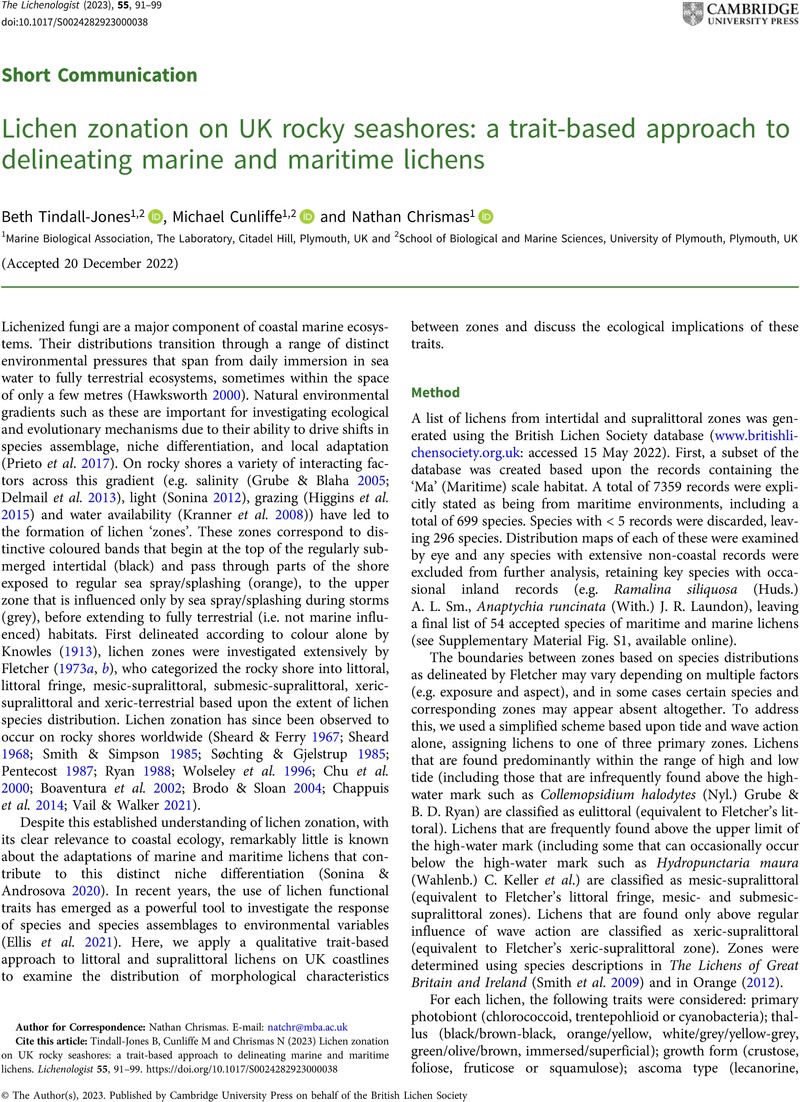Crossref Citations
This article has been cited by the following publications. This list is generated based on data provided by Crossref.
Rakotondraibe, Harinantenaina Liva R.
Spjut, Richard W.
and
Addo, Ermias Mekuria
2024.
Progress in the Chemistry of Organic Natural Products 124.
Vol. 124,
Issue. ,
p.
185.
Chrismas, Nathan
Tindall‐Jones, Beth
Jenkins, Helen
Harley, Joanna
Bird, Kimberley
and
Cunliffe, Michael
2024.
Metatranscriptomics reveals diversity of symbiotic interaction and mechanisms of carbon exchange in the marine cyanolichen Lichina pygmaea.
New Phytologist,
Vol. 241,
Issue. 5,
p.
2243.




